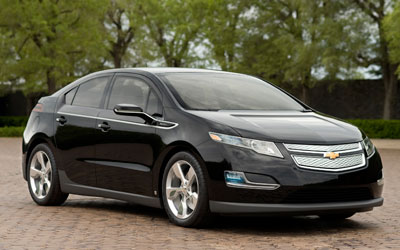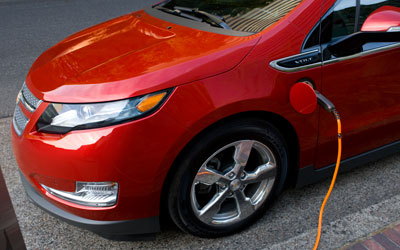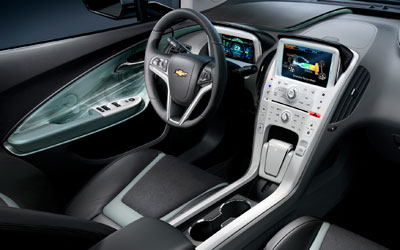Bow-Tie Brand Delivers on Promise
Posted by:
Mark Bilek
Chevrolet made good on a three-year-old promise last month by starting production of the world's first electric vehicle with extended-range capability, a.k.a. the Chevy Volt. Regardless of your political, environmental or manufacturer views, the Volt is a truly revolutionary vehicle. No it's not a pure electric, but it does fundamentally change the game much like the internal-combustion engine revolutionized transportation more than 100 years ago.

2011 Chevrolet Volt
For all practical purposes, the Volt is driven by electricity. For the first 40 miles or so the batteries do all the work, providing power to the Volt's 111 kW electric motor to drive the wheels. Once the battery charge dips below a set threshold, a gasoline engine kicks on and spins a generator which provides charge to the batteries, extending range an additional 300 miles.
Like all of today's hybrids, there are certain times when the Volt's gasoline engine is directly connected to the drive wheels. That occurs at highway speeds when it's the most efficient solution. Directly coupling the wheels to the gas engine makes the Volt more efficient than having the gas engine turn a generator to supply electricity to the battery, which would then power the electric motor.
Another neat thing about the Volt is the fact that the gas engine doesn't increase the charge in the batteries, it just maintains charge. When the battery needs a boost to keep the Volt going, the gas engine provides power on demand, as needed, with no loss in acceleration. The reasoning behind this is that using grid electricity is the most efficient way to charge the battery, so the gas engine only keeps the Volt going until it can be plugged in.
A few weeks ago, the Volt's media team was in Chicago giving journalists a brief opportunity to drive the vehicle. During that drive, the first thing I noticed was how "normal" the experience was. Simply put, the Volt drives like any other production automobile. Put the selector in drive and press the gas--or should I say accelerator--and the Volt moves out as commanded.

Volt batteries can be recharged with standard 110-volt current.
Yes, it's nearly silent in electric mode and there's no traditional drivetrain vibration. The Volt accelerates smoothly and, dare I say, smartly away from stoplights. Highway passing power is just average, but adequate for this class of car.
As the miles accumulate and battery charge drops, a computer kicks on the gasoline engine/generator combo to provide additional charge. While you can hear and feel the engine come on, it runs at a constant speed regardless of how fast you are driving so it quickly becomes background noise. All of this happens without any driver interaction.
Consequently, driving the Volt is little different that piloting a Chevy Cruze or Toyota Corolla--and that's a very good thing. While most hybrids come with a compromised powertrain, one that's either down on power or noticeably different when operating in different modes, the Volt just cruises along like a regular car. Conversely, the Volt's range-extending gasoline engine eliminates any anxiety that might be caused when the batteries run out of juice.
Now before this rant becomes too long winded or compromised, we have to take into account the Volt's $40,280 sticker. That's $20,000 more than a similarly sized compact--a difference that you would certainly never make up in fuel savings over the life of the vehicle.
But the Volt isn't about saving owners money. It's about changing perceptions and breaking new ground. It's about a fundamental shift in the way we power our vehicles. And, it's likely a sign of things to come.

Interior of the Chevrolet Volt
Unfortunately, Chicagoans will have to wait for the Volt, as we're not one of the initial launch markets. The earliest Volts will start charging into Chicago Chevy dealerships in the first part of 2012. Still, we might have a surprise opportunity for you get seat time in Volt about 12 months sooner . . . at the Chevrolet Volt Test Track at the 2011 Chicago Auto Show this February!
« Last Post
Next Post »
View all Posts from this Blog